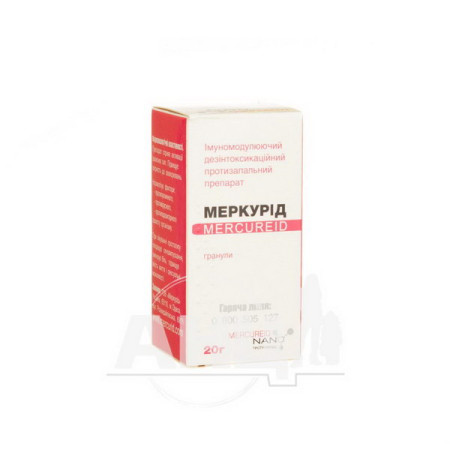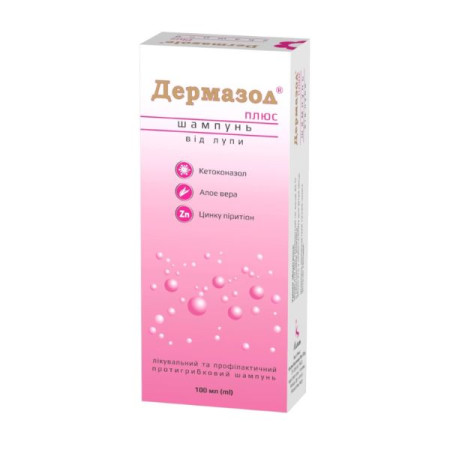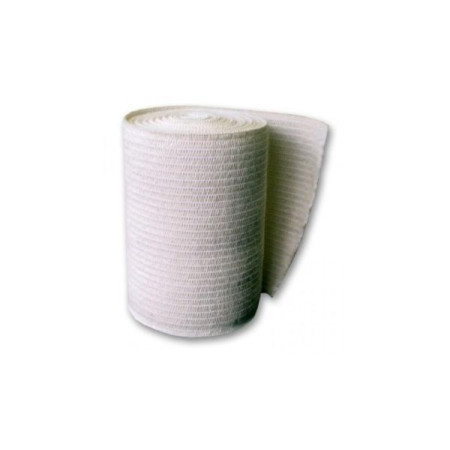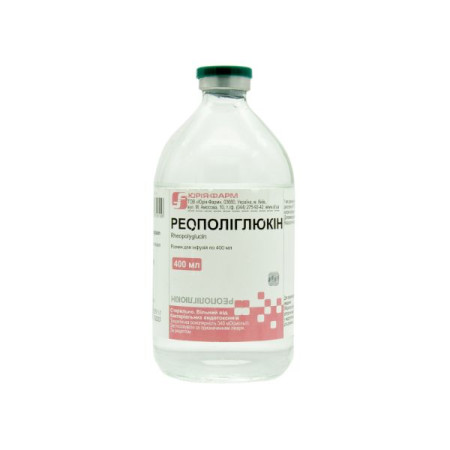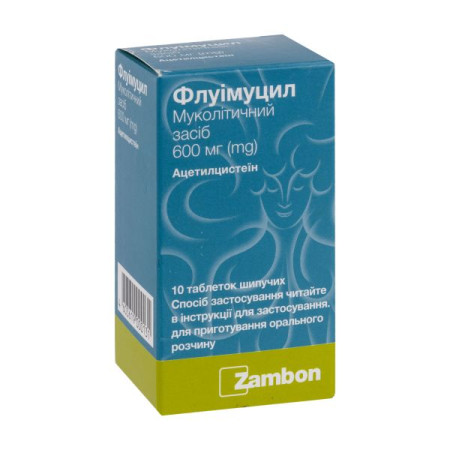Desloratadine-Teva oral solution 0.5 mg/ml bottle 60 ml

Instructions for use Desloratadine-Teva oral solution 0.5 mg/ml bottle 60 ml
Composition
active ingredient: desloratadine;
1 ml of oral solution contains desloratadine 0.5 mg;
Excipients: sorbitol solution, non-crystallizing (E 420); propylene glycol; citric acid, monohydrate (E 330); sodium citrate (E 331); hypromellose 2910; sucralose; disodium edetate; flavoring*; purified water.
*Tutti frutti flavoring: flavoring substances and flavoring preparations, glycerol triacetate (E 1518), alpha-tocopherol (E 307).
Dosage form
Oral solution.
Main physicochemical properties: clear, colorless solution, free from visible particles.
Pharmacotherapeutic group
Antihistamines for systemic use.
ATX code R06A X27.
Pharmacological properties
Pharmacodynamics.
Mechanism of action: Desloratadine is a long-acting, non-sedating histamine antagonist with selective peripheral H1-receptor antagonist activity. After oral administration, desloratadine selectively blocks peripheral H1-histamine receptors, as the substance hardly penetrates the central nervous system.
In vitro studies have shown anti-allergic properties, including inhibition of the release of pro-inflammatory cytokines such as IL-4, IL-6, IL-8, and IL-13 from human mast cells/basophils, and inhibition of the expression of adhesion molecules such as P-selectin on endothelial cells. The clinical relevance of these observations remains to be established.
Clinical efficacy and safety.
Children: The efficacy of desloratadine oral solution has not been studied in separate pediatric studies. However, the safety of desloratadine syrup, which contains a similar concentration of active ingredient as the oral solution, has been studied in three clinical studies in children.
Children aged 1–11 years who required antihistamine therapy were given desloratadine at a daily dose of 1.25 mg (1–5 years) or 2.5 mg (6–11 years). Treatment was well tolerated, as evidenced by clinical and laboratory findings, vital signs, and ECG data, including QTc interval. When administered at recommended doses, desloratadine plasma concentrations were comparable in adult and pediatric populations, and therefore, since the course of allergic rhinitis and chronic idiopathic urticaria and the profile of desloratadine action in children and adults are similar, the data on the efficacy of desloratadine can be extrapolated to the pediatric population. The efficacy of desloratadine syrup has not been studied in pediatric studies in children under 12 years of age.
Adults and adolescents: In a multiple-dose clinical study in adults and adolescents, in which desloratadine was administered daily for 14 days at a dose of up to 20 mg, no statistically or clinically significant changes in the cardiovascular system were observed. In a clinical pharmacology study, when desloratadine was administered to adults and adolescents for 10 days at a dose of 45 mg per day (9 times the clinical dose), no prolongation of the QTc interval was observed.
Desloratadine has little or no effect on the central nervous system; in controlled clinical trials, the recommended dose of 5 mg/day in adults and adolescents did not differ from placebo in the incidence of somnolence. In clinical trials, single doses of desloratadine, tablets, 7.5 mg/day had no effect on psychomotor performance. In a single-dose study in adults, desloratadine 5 mg did not affect standard flight performance measures, including exacerbation of subjective drowsiness or flight-related tasks.
In clinical pharmacology studies in adults, co-administration with alcohol did not increase alcohol-induced impairment or drowsiness. There were no significant differences in psychomotor test performance between desloratadine and placebo, whether taken alone or with alcohol.
No clinically significant changes in desloratadine plasma concentrations were observed with multiple administration of ketoconazole and erythromycin.
In patients with allergic rhinitis, desloratadine effectively relieved and controlled symptoms such as sneezing, nasal itching and discharge, itching and redness of the eyes, tearing, and itching of the palate for 24 hours.
The effectiveness of desloratadine tablets in adolescents aged 12–17 years has not been conclusively demonstrated in studies.
Desloratadine tablets are effective in alleviating the severity of seasonal allergic rhinitis as measured by the Rhinoconjunctivitis Quality of Life Questionnaire. The greatest improvement was seen in the questionnaire items related to practical problems and daily activities that were limited by symptoms.
Chronic idiopathic urticaria has been studied as a clinical model for urticarial disorders because the mechanisms of development are similar, regardless of etiology. Histamine release is a causal factor in all urticarial disorders, and therefore desloratadine may be effective in relieving the symptoms of all urticarial disorders, including chronic idiopathic urticaria.
In two 6-week placebo-controlled studies in patients with chronic idiopathic urticaria, desloratadine was effective in relieving pruritus and reducing the number and size of hives by the end of the first dosing interval. In each study, the effect was maintained throughout the 24-hour dosing interval. As in other clinical trials of antihistamines in chronic idiopathic urticaria, a small number of patients who were considered insensitive to antihistamines were excluded from the study. Relief of pruritus by more than 50% was observed in 55% of patients receiving desloratadine compared with 19% of patients receiving placebo. Desloratadine treatment also significantly reduced the impact of the disease on sleep and daytime activity as measured by a four-point scale used to assess these changes.
Pharmacokinetics.
Absorption: Desloratadine plasma concentrations are determined 30 minutes after administration, desloratadine is well absorbed, with peak concentrations occurring approximately 3 hours after administration, and a terminal elimination half-life of approximately 27 hours. The extent of desloratadine accumulation is consistent with its terminal elimination half-life (approximately 27 hours) and once-daily dosing.
In a series of clinical and pharmacokinetic studies, higher concentrations of desloratadine were observed in 6% of subjects, the prevalence of the poor metabolizer phenotype was comparable in adults (6%) and children 2–11 years of age (6%), and higher among representatives of other ethnic groups (representatives of the Negroid race: 18% of adults and 16% of children, Caucasian: 2% of adults and 3% of children, respectively).
In a multiple-dose pharmacokinetic study of desloratadine tablets in healthy adult volunteers, 4 subjects were identified as poor metabolizers of desloratadine. They had an average 3-fold higher Cmax at approximately 7 hours and a terminal half-life of approximately 89 hours.
In a multiple-dose pharmacokinetic study using desloratadine syrup in poor metabolizers aged 2–11 years with allergic rhinitis, exposure (AUC) to desloratadine was approximately 6-fold higher and Cmax was approximately 3–4-fold higher.
after 3–6 hours with a terminal half-life of approximately 120 hours. Exposure was similar in adults and children who are poor metabolizers at age-appropriate doses. The safety profile in these patients did not differ from that in the general population. The effects of desloratadine in poor metabolizers under 2 years of age have not been studied. In separate single-dose studies in pediatric patients receiving recommended doses, desloratadine AUC and Cmax values were comparable to those in adults receiving 5 mg desloratadine syrup.
Distribution: Desloratadine is moderately bound to plasma proteins (83–87%). When desloratadine doses (5 to 20 mg) are administered once daily for 14 days, there is no evidence of clinically significant drug accumulation.
The bioequivalence of the tablet form of desloratadine and the syrup, which contains a similar concentration of the active substance to the solution, has been proven, and since the solution and syrup contain the same concentration of the active substance, it is assumed that the solution is bioequivalent to the syrup and tablets.
Biotransformation. The enzyme responsible for the metabolism of desloratadine has not yet been identified, therefore some interactions with other drugs cannot be completely excluded. Desloratadine does not inhibit CYP3A4 in vivo , in vitro studies have shown that the drug does not inhibit CYP2D6, and is not a substrate or inhibitor of P-glycoprotein.
Conclusion: In a single-dose study of 7.5 mg desloratadine, food intake (a high-fat, high-calorie breakfast) did not affect the pharmacokinetics of desloratadine. Grapefruit juice was also found to have no effect on the pharmacokinetics of desloratadine.
Patients with renal impairment: The pharmacokinetics of desloratadine in patients with chronic renal failure were compared to those in healthy subjects in one single-dose study and one multiple-dose study; in both studies, changes in exposure (AUC and Cmax) of desloratadine and 3-hydroxydesloratadine were not clinically significant.
Linearity/non-linearity: The bioavailability of desloratadine was dose proportional over the range of 5 mg to 20 mg.
Indication
– allergic rhinitis (such as sneezing, itching and nasal discharge, itching and redness of the eyes, tearing, itching of the palate);
– urticaria (such as itching and rash).
Contraindication
Hypersensitivity to desloratadine, to any of the excipients of the drug or to loratadine.
Interaction with other medicinal products and other types of interactions
In clinical studies of the simultaneous use of desloratadine tablets with erythromycin or ketoconazole, no clinically significant interaction was observed. In clinical and pharmacological studies, when desloratadine tablets were used together with alcohol, no increase in the negative effects of ethanol was noted. However, in the post-marketing period, cases of alcohol intolerance and alcohol intoxication were observed during the use of the drug, so caution should be exercised when drinking alcohol during treatment with desloratadine.
The interaction study was conducted only with adults.
Application features
The drug should be used with caution in patients with severe renal insufficiency.
Desloratadine should be used with caution in patients with a medical or family history of seizures. Children may be more susceptible to developing a new seizure while taking desloratadine. The physician should consider discontinuing desloratadine in patients who experience a seizure while taking the drug.
Since it is difficult to differentiate allergic rhinitis from other forms of rhinitis in children under 2 years of age, one should take into account the history, physical examination results, skin and laboratory tests, and pay attention to the absence of upper respiratory tract infection and structural abnormalities.
Approximately 6% of adults and children aged 2–11 years are poor metabolizers of desloratadine, resulting in increased drug exposure. The safety of desloratadine in children aged 2–11 years with poor and normal metabolizers is not different. The effects of desloratadine in children aged 2–11 years who are poor metabolizers have not been studied.
The medicinal product contains sorbitol (1472 mg sorbitol in 10 ml, equivalent to 21 mg/kg/day based on a daily dose for an adult weighing 70 kg), therefore it should not be used in patients with hereditary fructose intolerance, glucose-galactose malabsorption or sucrose-isomaltose malabsorption. The additive effect of concomitantly administered products containing sorbitol (or fructose) and the dietary intake of sorbitol (or fructose) should be taken into account. The sorbitol content of oral medicinal products may affect the bioavailability of other oral medicinal products taken at the same time.
This medicinal product contains 38.46 mg sodium per 10 ml, equivalent to 1.92% of the recommended maximum daily intake of 2 g sodium for an adult. This should be taken into consideration by patients on a controlled sodium diet.
This medicinal product contains 1023 mg of propylene glycol in 10 ml, equivalent to 14.16 mg/kg/day (calculated on a daily dose for an adult weighing 70 kg).
Use during pregnancy or breastfeeding
Pregnancy. A large amount of data on the use of desloratadine during pregnancy (more than 1000 cases) indicate the absence of teratogenic, fetotoxic effects and adverse effects on the newborn. Animal studies have not revealed direct or indirect adverse effects on reproductive function. As a precautionary measure, it is preferable to avoid the use of the drug Desloratadine-Teva during pregnancy.
Breastfeeding. Desloratadine has been detected in breastfed newborns/infants of women taking this drug. The effects of desloratadine on newborns/infants are unknown. Breastfeeding women are advised to decide whether to discontinue breast-feeding or to avoid the drug, taking into account the benefit of breast-feeding for the child and the benefit of the drug for the mother.
Fertility: There are no data on the effects on male or female fertility.
Ability to influence reaction speed when driving vehicles or other mechanisms
Clinical trial data indicate that desloratadine has no or negligible influence on the ability to drive or use machines. Patients should be advised that most people do not experience drowsiness. However, since there is individual variability in response to all drugs, it is recommended that patients refrain from engaging in activities that require mental alertness, such as driving or operating machinery, until they know how they react to the drug.
Method of administration and doses
Desloratadine-Teva solution should be administered orally, regardless of meals.
Adults and adolescents (12 years of age and older):
- 10 ml of solution (5 mg of desloratadine) once a day.
Children: For treatment, use the following dosage regimen:
The safety and efficacy of Desloratadine oral solution in children under 1 year of age have not been established. There is limited clinical experience of the efficacy of desloratadine in children aged 1 to 11 years and adolescents aged 12 to 17 years.
It should be noted that most cases of rhinitis in children under two years of age are infectious and there are no data supporting the treatment of infectious rhinitis with desloratadine.
Treatment of intermittent allergic rhinitis (presence of symptoms less than 4 days per week or less than 4 weeks) should be carried out taking into account the anamnesis: stop after the disappearance of symptoms and resume in case of their recurrence. In persistent allergic rhinitis (presence of symptoms more than 4 days per week or more than 4 weeks), treatment should be continued throughout the entire period of contact with the allergen.
Children
The safety and efficacy of Desloratadine oral solution in children under 1 year of age have not been established.
Overdose
According to post-marketing data, the profile of adverse reactions associated with overdose was similar to that of therapeutic doses, but the severity of these signs was stronger.
Treatment: In case of overdose, standard measures should be taken to remove unabsorbed active substance, as well as symptomatic and supportive treatment.
Desloratadine is not removed by hemodialysis, and its removal by peritoneal dialysis has not been established.
Symptoms: In clinical studies of multiple doses of desloratadine up to 45 mg (9 times the therapeutic dose), no clinically significant effects were observed.
Children: Based on post-marketing experience, the adverse reaction profile associated with overdose is similar to that observed at therapeutic doses, but the severity of symptoms may be more severe.
Adverse reactions
Summary of safety profile.
Children: In clinical trials of desloratadine syrup in a total of 246 children aged 6 months to 11 years, the overall incidence of adverse events in children aged 2 to 11 years was similar in the desloratadine and placebo groups. In infants and young children (6 to 23 months), the most common adverse events, which occurred more frequently than in the placebo group, were diarrhea (3.7%), fever (2.3%), and insomnia (2.3%). In an additional study of a single dose of 2.5 mg of desloratadine oral solution in children 6 to 11 years of age, no adverse reactions were observed.
In a clinical study involving 578 adolescents aged 12 to 17 years, the most common adverse event was headache; this event was observed in 5.9% of patients treated with desloratadine and 6.9% of patients treated with placebo.
Adults and adolescents: At the recommended dose, in clinical trials in adults and adolescents for indications including allergic rhinitis and chronic idiopathic urticaria, adverse events were reported in patients 3% more frequently than in the placebo group. The most frequently reported adverse events compared to placebo were fatigue (1.2%), dry mouth (0.8%), and headache (0.6%).
Overall frequency of adverse reactions. The frequency of adverse reactions in clinical trials reported in excess of placebo and other adverse reactions reported in the post-marketing period is listed below. The frequency of adverse reactions is classified as follows: very common (≥ 1/10), common (≥ 1/100, < 1/10), uncommon (≥ 1/1,000, < 1/100), rare (≥ 1/10,000, < 1/1,000), very rare (< 1/10,000) and unknown (cannot be estimated from the available data).
Psychiatric disorders: Very rare: hallucinations. Frequency unknown: abnormal behavior, aggression, depressed mood.
Metabolism and nutrition disorders: Frequency not known: increased appetite.
On the part of the organs of vision. Frequency unknown: dry eyes.
Nervous system disorders: Common: headache, insomnia (for children under 2 years of age). Very rare: dizziness, drowsiness, insomnia, psychomotor hyperactivity, convulsions.
Cardiac disorders: Very rare: tachycardia, palpitations. Frequency not known: QT prolongation.
Gastrointestinal: Common: dry mouth, diarrhea (for children under 2 years of age). Very rare: abdominal pain, nausea, vomiting, dyspepsia, diarrhea.
Hepatobiliary disorders: Very rare: increased liver enzymes, increased bilirubin, hepatitis. Frequency unknown: jaundice.
Musculoskeletal and connective tissue disorders: Very rare: myalgia.
Skin and subcutaneous tissue disorders: Frequency not known: photosensitivity.
General disorders and administration site conditions: Common: fatigue, fever (for children under 2 years of age). Very rare: hypersensitivity reactions (such as anaphylaxis, angioedema, dyspnoea, pruritus, rash and urticaria). Frequency not known: asthenia.
Investigations: Frequency not known: weight gain.
A retrospective observational safety study found an increased incidence of seizure onset in patients aged 0 to 19 years while taking desloratadine compared to periods when they were not receiving desloratadine.
Among children aged 0–4 years, the adjusted absolute increase was 37.5 (95% confidence interval (CI) 10.5–64.5) per 100,000 person-years, with a previous rate of new onset seizures of 80.3 per 100,000 person-years. Among patients aged 5–19 years, the adjusted absolute increase was 11.3 (95% CI 2.3–20.2) per 100,000 person-years, with a previous rate of 36.4 per 100,000 person-years.
Reporting of suspected adverse reactions.
Reporting suspected adverse reactions after the registration of a medicinal product is important. This allows monitoring of the benefit/risk balance of the medicinal product. Healthcare professionals should report any suspected adverse reactions.
Expiration date
3 years.
The shelf life after first opening the bottle is 2 months.
Storage conditions
The medicinal product does not require any special storage conditions. Store in the original packaging to protect from light. Keep out of the reach of children.
Packaging
60 ml or 100 ml in a bottle, 1 bottle together with a measuring syringe in a box.
Vacation category
Without a prescription.
Producer
Balkanfarma-Troyan JSC.
Location of the manufacturer and address of its place of business.
1 Krayrechna St., Troyan, 5600, Bulgaria.
There are no reviews for this product.
There are no reviews for this product, be the first to leave your review.
No questions about this product, be the first and ask your question.

